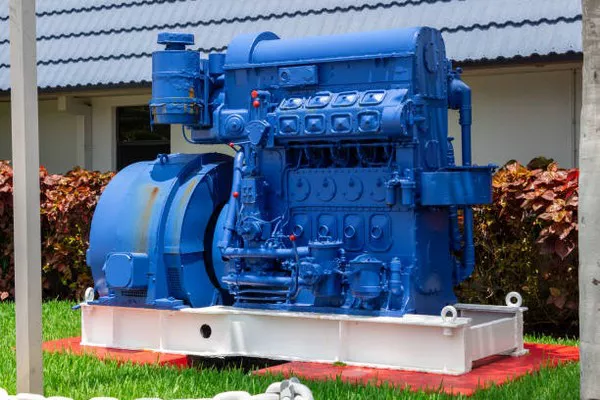In the pursuit of sustainable energy solutions, researchers and engineers have turned their attention to innovative technologies that can efficiently convert waste heat into usable electricity. One such technology gaining prominence is the thermoelectric generator (TEG). This article delves into the working principles of thermoelectric generators, exploring the science behind their operation and their potential applications in various industries.
Basic Principles of Thermoelectricity
At the heart of thermoelectric generators lies the phenomenon of thermoelectricity, a process that involves the direct conversion of temperature differences into electric voltage. This effect, known as the Seebeck effect, was first discovered by German physicist Thomas Johann Seebeck in 1821. The Seebeck effect occurs when a temperature gradient is applied across a material with differing electrical conductivities, resulting in the generation of an electric voltage.
Materials Used in Thermoelectric Generators
To harness the Seebeck effect effectively, thermoelectric generators employ specific materials with high thermoelectric efficiency. These materials are characterized by a high Seebeck coefficient, which measures the magnitude of the generated voltage per unit temperature difference. Additionally, these materials should exhibit low thermal conductivity to maintain a significant temperature gradient.
Commonly used materials in thermoelectric generators include bismuth telluride, lead telluride, and skutterudites. These materials possess the necessary thermoelectric properties, making them suitable for converting waste heat into electricity.
The Working Mechanism of Thermoelectric Generators
Thermoelectric generators consist of multiple thermoelectric modules connected in series or parallel, depending on the desired application and power output. Each module comprises two different types of thermoelectric materials: n-type (negative) and p-type (positive).
Absorption of Heat: The process begins with one side of the thermoelectric module being exposed to a heat source, often in the form of waste heat generated from industrial processes, exhaust gases, or even solar radiation. The absorbed heat causes the electrons in the n-type material to gain energy, leading to increased electron mobility.
Creation of Temperature Gradient: As the electrons move through the n-type material, they transfer heat to the p-type material, creating a temperature gradient across the module. This temperature difference is a crucial factor in the generation of electricity through the Seebeck effect.
Voltage Generation: The temperature gradient induces the movement of electrons from the hot side (n-type) to the cold side (p-type) of the thermoelectric module. This flow of electrons results in the generation of an electric voltage, which can be harnessed for various applications.
Collection of Electricity: To extract electrical power efficiently, multiple thermoelectric modules are often interconnected, and the generated voltage is collected through conductive materials. The electricity produced can then be utilized to power electronic devices, charge batteries, or contribute to the main power grid.
Applications of Thermoelectric Generators
Thermoelectric generators find applications in diverse fields, owing to their ability to convert waste heat into electricity. Some notable applications include:
Automotive Industry: Thermoelectric generators can be integrated into the exhaust systems of vehicles to harness the waste heat produced during combustion. This converted energy can be used to power auxiliary systems, reducing the load on the engine and improving fuel efficiency.
Industrial Processes: Many industrial processes generate substantial amounts of waste heat, which can be effectively captured and converted into electricity using thermoelectric generators. This not only contributes to energy efficiency but also reduces the environmental impact of industrial operations.
Space Exploration: Thermoelectric generators have been employed in space missions, where solar power may be limited. Radioisotope thermoelectric generators (RTGs) use the heat generated from the decay of radioactive isotopes to produce electricity for space probes and satellites.
Wearable Electronics: With the growing popularity of wearable devices, there is a need for compact and efficient power sources. Thermoelectric generators offer a promising solution by utilizing the body heat of the wearer to generate electricity for these devices.
See Also What Do Generators Run On?A Comprehensive Exploration
Challenges and Future Prospects
While thermoelectric generators hold great promise, certain challenges hinder their widespread adoption. One primary challenge is the relatively low efficiency compared to traditional power generation methods. Researchers are actively working on enhancing the thermoelectric efficiency of materials and optimizing the design of thermoelectric modules to address this limitation.
Future advancements in nanotechnology may also play a significant role in improving the performance of thermoelectric generators. The development of nanostructured materials with enhanced thermoelectric properties could lead to more efficient and cost-effective devices.
Conclusion
Thermoelectric generators represent a remarkable advancement in the realm of sustainable energy solutions, offering a means to harness waste heat and convert it into usable electricity. As research and development in this field continue to progress, the efficiency and applicability of thermoelectric generators are expected to improve, opening up new possibilities for clean and efficient energy generation. The integration of these generators into various industries and everyday devices has the potential to contribute significantly to the global effort to reduce carbon emissions and create a more sustainable future.

